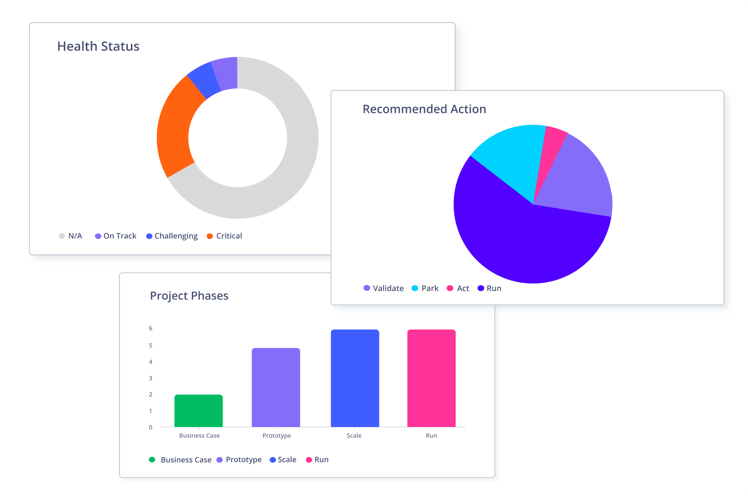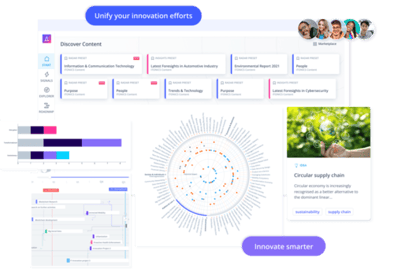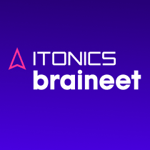The Agile methodology is rooted in software development and was born out of a need to adapt to rapidly changing requirements and technologies. In the good ol’ days, sequential methods (we all remember waterfall) assumed that all requirements could be determined upfront and that they would remain stable during the entire development process.
As the technology landscape started to shift more rapidly in the 1990s, traditional methods of project planning and execution became increasingly problematic, with projects often overrunning their schedules, exceeding budgets, and delivering products that no longer met customer needs.
The following article starts with a short history of Agile, and concludes with the implications of Scaled Agile on innovation and the scalability of innovation in large organizations.
The history of Agile
- Origins in Software Development (Late 20th Century): During the late 1980s and early 1990s, the software industry was largely dominated by waterfall and other sequential development models.
- Birth of Agile (2001): In response to software development projects often overrunning their schedules, exceeding budgets, and delivering products that no longer met customer needs, a group of seventeen software developers met in Snowbird, Utah, in 2001 to discuss these challenges. They formulated the Agile Manifesto, a declaration of four values and twelve principles to guide software development based on iterative progress, collaboration, and flexibility. The Agile Manifesto emphasized individuals and interactions over processes and tools, working software over comprehensive documentation, customer collaboration over contract negotiation, and responding to change over following a plan.
- Emergence of Agile Frameworks and Methods (Early 21st Century): Following the creation of the Agile Manifesto, several Agile frameworks and methodologies were developed, including Scrum, Extreme Programming (XP), Lean Software Development, and later Kanban, which provided concrete practices for implementing the Agile principles. These methodologies encouraged short, iterative cycles of work, adaptive planning, early delivery, continuous improvement, and flexibility in response to change.
- Scaling Agile (Late 2000s to Early 2010s): As Agile methods gained popularity, larger organizations began trying to apply these practices at a scale beyond individual teams, leading to the development of frameworks like the Scaled Agile Framework (SAFe®), Large-Scale Scrum (LeSS), and Disciplined Agile Delivery (DAD). These frameworks provided structures for applying Agile principles at the program and portfolio levels.
- Agile beyond Software (Present): Today, the principles of Agile are being applied beyond software development and IT, into areas like marketing, HR, finance, and operations. Organizations across sectors leverage Agile principles to foster innovation, respond to changing customer needs, and improve collaboration and productivity. Agile Project Management has also become a prominent approach in various industries for managing and delivering projects.
The Agile movement has fundamentally altered how software is developed, placing emphasis on adaptability, customer collaboration, and continuous delivery of value. As Agile continues to evolve and adapt, it is likely to further influence not only the field of software development but also the broader landscape of R&D, transformation, program, and project management.
What is the Scaled Agile Framework (SAFe)?
The Scaled Agile Framework (SAFe) is a tool enterprises can use to apply Agile and Lean practices at scale for large, complex development environments. It provides a comprehensive structure for organizations to uphold lean-agile principles and apply them across teams, programs, and portfolio levels. The aim of SAFe is to improve business agility by accelerating productivity, time-to-market, quality, and employee engagement.
SAFe is grounded on three primary bodies of knowledge: Agile development, Systems thinking, and Lean product development.
- Agile development is a set of principles for software development that emphasizes flexibility, customer collaboration, and high-quality output. It promotes adaptive planning, evolutionary development, early delivery, and continual improvement for rapid and flexible response to change.
- Systems thinking is a holistic approach to analysis that focuses on the way a system's constituent parts interrelate and how systems work over time and within the context of larger systems. Systems thinking in the context of SAFe aids in understanding the complex interactions within the organization and the broader ecosystem, which is crucial for implementing Agile at a large scale.
- Lean product development is an approach derived from Lean Manufacturing that focuses on creating value for the end customer and efficiently using resources in the process. It prioritizes reducing waste, improving process speed, and leveraging employee creativity.
In terms of its structure, SAFe comprises four levels:
- Team level: At the team level, SAFe emphasizes Agile teams that operate using the Scrum framework, XP (Extreme Programming), or Kanban systems. These teams aim to deliver high-quality increments of value in a regular, reliable manner.
- Program level: The program level incorporates multiple Agile teams (generally 5-12) and aligns them to a common mission via an Agile Release Train (ART). An ART is a long-lived, self-organizing, virtual organization (approximately 50 – 125+ people across the multiple Agile teams) that collectively plans, commits to, and executes portfolio initiatives.
- Large solution level: This level is designed for large-scale solutions that necessitate the coordination of multiple ARTs and suppliers. It utilizes Solution Trains to align with other ARTs and deliver substantial, integrated solutions.
- Portfolio level: The portfolio level provides a mechanism for strategy execution by coordinating the activities of Agile Release Trains (ARTs) and Solution Trains, allocating resources and funds, and providing oversight to track progress and ensure alignment.
SAFe provides a set of predefined roles, responsibilities, artifacts, and activities that organizations can tailor to their specific needs, with an understanding that context matters. It also introduces the concept of the architectural runway, which is the existing code, components, and technical infrastructure needed to implement near-term features without excessive redesign and delay.
While it provides a clear and structured approach to implementing Agile at an enterprise scale, it is not without its criticisms. Detractors of SAFe often cite its complexity and perceived rigidity as downsides. However, for many large and complex organizations, SAFe's structured approach can be a valuable tool to navigate the complexities of adopting Agile at scale. As with any framework or methodology, its successful implementation depends heavily on the context and the adaptability of the organization adopting it.
Benefits of the Scaled Agile Framework for innovation
As many organizations struggle with innovation in volatile environments with an ever-increasing speed of change and more and more emerging technologies, can frameworks like SAFe help with structure, alignment, and focus?
I’d define innovation as a process involving identifying and defining opportunities from trends and emerging technologies (“Where to Play”), the emergence of a concept or an idea (“How to Win”), and a fully developed new set of organizational activities, technologies, products, or services on the market (“What and When to Execute”). Frameworks like SAFe primarily focus on execution, scaling value delivery and achieving business agility; the ability to swiftly take advantage of new opportunities or adapt to industry shifts.
There are several advantages and positive outcomes that organizations can achieve by implementing SAFe in their end-to-end innovation practices.
- Strategic alignment: SAFe emphasizes aligning the organization's strategy with its innovation initiatives by defining clear strategic themes and objectives. This alignment ensures that innovation efforts are focused on achieving the company's overall goals.
- Agile mindset: SAFe promotes an agile mindset throughout the organization, encouraging iterative and incremental development, collaboration, and continuous improvement. This mindset creates a culture that fosters innovation, adaptability, and learning.
- Lean portfolio management: SAFe incorporates lean principles into portfolio management, enabling companies to optimize the allocation of resources and prioritize innovation initiatives based on their potential value and strategic importance.
- Innovation prioritization: SAFe provides mechanisms for evaluating and prioritizing innovation initiatives within the portfolio. Techniques like Weighted Shortest Job First (WSJF) allow organizations to assess initiatives based on their economic impact, cost of delay, and risk factors, enabling better decision-making and resource allocation.
- Agile teams and cross-functional collaboration: SAFe encourages the formation of agile teams that are cross-functional and self-organizing. These teams are empowered to collaborate and innovate, leveraging their diverse skill sets to generate creative solutions.
- Innovation iteration cycles: SAFe supports iterative development through its Agile Release Trains (ARTs), which enable regular delivery of value and feedback loops. This iterative approach facilitates experimentation, learning, and adaptation, promoting innovation within the organization.
- Innovation metrics and transparency: SAFe emphasizes using metrics and transparency to measure the performance and impact of innovation initiatives. This data-driven approach enables companies to identify successful innovations, make data-backed decisions, and foster a culture of continuous improvement.
- Continuous learning and knowledge sharing: SAFe encourages continuous learning at both the individual and organizational levels. Communities of Practice (CoPs), Innovation and Planning (IP) Iterations, and Inspect and Adapt (I&A) events provide platforms for sharing knowledge, lessons learned, and best practices, fostering innovation across the organization.
It is worth noting that the effectiveness of SAFe in promoting innovation and managing agile innovation portfolios may vary depending on the specific context, industry, and organizational culture.
Getting started with the Scaled Agile Framework
Adopting the Scaled Agile Framework in your organization requires upfront commitment and sponsorship from top-level executives and a step-by-step implementation plan. The plan should detail the scope of the initial roll-out, training, and the establishment of Agile Release Trains (ARTs) and the Agile teams that comprise them.
For leaders in roles like strategic portfolio management or project portfolio management (PPM) looking to implement SAFe, having a centralized platform like the ITONICS Innovation OS provides the transparency, collaboration, and governance needed for effective lean portfolio management.
How ITONICS supports the adoption of SAFe lean portfolio management:
- Roles and functions: SAFe involves many cross-functional teams and stakeholders throughout an organization. There are multiple Agile teams, multi-team ARTs, and various roles within the lean portfolio management function, including strategy and investment planning, lean governance, and agile operations.
With ITONICS, you can define and assign clear user roles and groups to reflect your SAFe structure. Empower individuals and teams with customizable permission settings to streamline decision-making, ensure accountability, and promote organization-wide participation and commitment toward effective strategy realization.
- KPIs and reporting: SAFe’s emphasis on data-driven decisions requires metrics and tracking mechanisms to measure the impact of portfolio initiatives. The ability to oversee and share KPIs related to resource allocation, market insights, ROI and financial analysis, and idea conversion rates in a central dashboard supports PPM leaders in strategic decision-making.
 ITONICS dashboards compile innovation KPIs into intuitive and dynamic visualizations. You can build and share custom reports and charts to provide actionable insights and a transparent view of your lean portfolio management initiatives, resource use, potential bottlenecks, and performance.
ITONICS dashboards compile innovation KPIs into intuitive and dynamic visualizations. You can build and share custom reports and charts to provide actionable insights and a transparent view of your lean portfolio management initiatives, resource use, potential bottlenecks, and performance.
- Transparency of work: In the SAFe approach, transparency, collaboration, and efficiency are essential across different levels of the organization. Integrating Kanban principles and the "build-measure-learn" approach into lean portfolio management can assist PPM leaders in enhancing these capabilities while steering projects to execution.
Kanban boards from ITONICS can be used to visualize the flow of work across Agile Release Trains (ARTs) and manage initiatives from ideation to execution. The real-time visibility of Kanban boards promotes collaboration, continuous improvement, and optimal value delivery in alignment with your organization’s strategic goals.
.webp?width=1045&height=693&name=iterative%20stage-gate%20processes%20(1).webp)
- Lean governance: Successful implementation of SAFe requires a balance between agility and innovation with the need for structure, coordination, and strategic alignment in large organizations. Lean governance provides the necessary structure and guidelines to apply agile practices while maintaining a focus on value creation and strategy realization.
The ITONICS Innovation OS supports lean governance principles by promoting transparency, efficiency, data-driven decision-making, and continuous improvement in the end-to-end innovation process. ITONICS centralizes all your innovation intelligence on one collaborative platform, connecting foresight and ideation activities to your strategic goals and portfolios to break down silos and unify efforts across your organization.
Get a free demo to learn more about how the #1 Innovation OS can scale Agile and Lean methodologies for large enterprises, enable multiple teams to collaborate to deliver complex projects, accelerate innovation, and put growth plans into practice!

See the ITONICS Innovation OS in action











